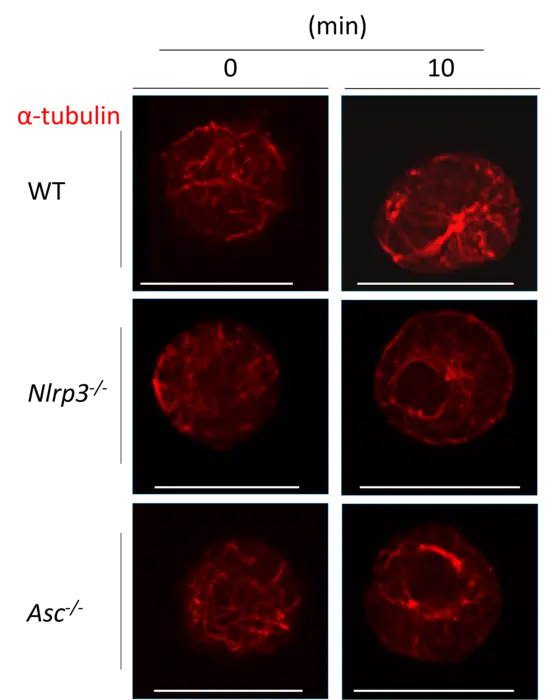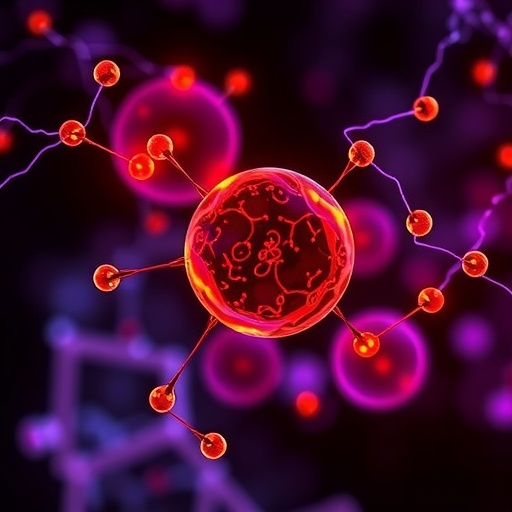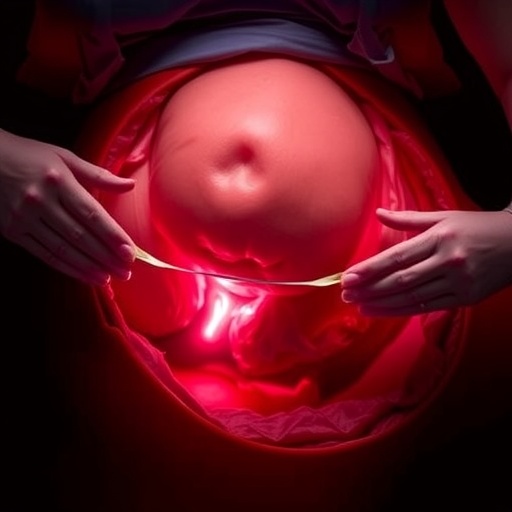Scientists at Duke-NUS Medical School have identified how the first domino falls after a person encounters an allergen, such as peanuts, shellfish, pollen or dust mites. Their discovery, published in the April issue of Nature Immunology, could herald the development of drugs to prevent these severe reactions.

Credit: Andrea Mencarelli
Scientists at Duke-NUS Medical School have identified how the first domino falls after a person encounters an allergen, such as peanuts, shellfish, pollen or dust mites. Their discovery, published in the April issue of Nature Immunology, could herald the development of drugs to prevent these severe reactions.
It is well established that when mast cells, a type of immune cell, mistake a harmless substance, such as peanuts or dust mites, as a threat, they release an immediate first wave of bioactive chemicals against the perceived threat. When mast cells, which reside under the skin, around blood vessels and in the linings of the airways and the gastrointestinal tract, simultaneously release their pre-stored load of bioactive chemicals into the blood, instant and systemic shock can result, which can be lethal without quick intervention.
More than 10 per cent of the global population suffers from food allergies, according to the World Health Organisation (WHO). As allergy rates continue to climb, so does the incidence of food-triggered anaphylaxis and asthma worldwide. In Singapore, asthma affects one in five children while food allergies are already the leading cause of anaphylactic shock.
What the team at Duke-NUS has now discovered is that the release of particulate mast cell granules, which contain these bioactive chemicals, is controlled by two members of an intracellular multiprotein complex called inflammasome. Until now, these inflammasome proteins were only known to spontaneously assemble within immune cells to secrete soluble chemicals to alert other parts of the immune system upon detection of an infection.
Professor Soman Abraham, Grace Kerby Distinguished Professor of Pathology at Duke University, who led this research when working in Duke-NUS’ Emerging Infectious Diseases Programme, said:
“We discovered that the inflammasome components played a surprisingly crucial role in transporting particulate mast cell granules which are typically packed in the cell centre to the cell surface where they are released. This surprising discovery gives us a precise target where we can intervene to prevent the cascade of events initiated in mast cells that leads to anaphylactic shock.”
Prof Abraham and his team’s eureka moment came while observing mice[1] whose mast cells lacked either of the two inflammasome proteins, NLRP3 or ASC. When these animals were exposed to allergens, they failed to experience anaphylactic shock. However, anaphylactic shock was observed when mast cell NLRP3 and ASC proteins assembled and bound to individual intracellular granules, forming a complex the researchers call granulosome, facilitating the granules’ movement along tracks formed by the cytoskeleton within the mast cell—akin to hooking them onto a set of “rail tracks”.
Dr Pradeep Bist, co-first author of the paper and a principal research scientist with Duke-NUS’ Emerging Infectious Diseases Programme, said:
“Upon mast cell activation, we observed rapid granule movement on dynamic tracks known as microtubules to the cell membrane, where these granules were promptly released from the cell. However, in mast cells deficient in either NLRP3 or ASC proteins, we found no sign of intracellular granule movement and none of these granules were released.”
Having demonstrated the trafficking role of NLRP3 and ASC, the team then turned to known inflammasome inhibitors to test whether they could prevent this event from taking place.
Using an inflammasome-blocking drug very similar to those undergoing clinical trials for chronic inflammatory diseases, called CY-09, they administered the therapy to mice before introducing an allergen. They found that in their preclinical model, they were able to effectively prevent anaphylactic shock with this drug.
Dr Andrea Mencarelli, from the Shanghai Jiao Tong University School of Medicine’s Immune Therapy Institute, Shanghai China, and who co-first authored the paper while working at Duke-NUS’ Emerging Infectious Diseases Programme, said:
“It was noteworthy that by employing a drug that specifically blocked inflammasome protein activity, we were able to selectively block the release of mast cells’ pre-stored chemicals without impacting other potentially beneficial activities of mast cells.”
While not a cure, this could offer people living with severe allergies a new tool to prevent the onset of a potentially traumatic reaction. Currently, emergency treatments are taken in the immediate aftermath of the first symptoms developing. These treatments need to be administered within a narrow window of time to be effective and they also have severe side effects.
“I could see this bringing peace of mind to parents of children with severe food allergies when they encounter situations where they can’t be sure whether there’s an exposure risk. While we don’t want to deactivate this part of the immune system for prolonged periods, this could potentially provide short-term protection,” said Prof Abraham, whose team is now working on optimising the dosage and frequency of use of this drug to achieve the best protective effects against anaphylactic shock.
“After this, we hope to do the same for asthma and allergic skin reactions.”
Professor Patrick Tan, Senior Vice-Dean for Research at Duke-NUS, said:
“This breakthrough has tremendous translational potential and represents a paradigm shift not only for further research but more importantly by enhancing the quality of life for those at risk of severe allergic reactions. It’s a beacon of hope, especially for parents of young children who live with this constant concern.”
[1] The study was conducted according to the National Advisory Committee for Laboratory Animal Research (NACLAR) guidelines
Journal
Nature Immunology
DOI
10.1038/s41590-024-01788-y
Method of Research
Experimental study
Subject of Research
Animals
Article Title
Anaphylactic degranulation by mast cells requires the mobilization of inflammasome components
Article Publication Date
14-Mar-2024





